Ownership, Quality, and Continuing Narrative Threads with Trevor Davis of William Ellery
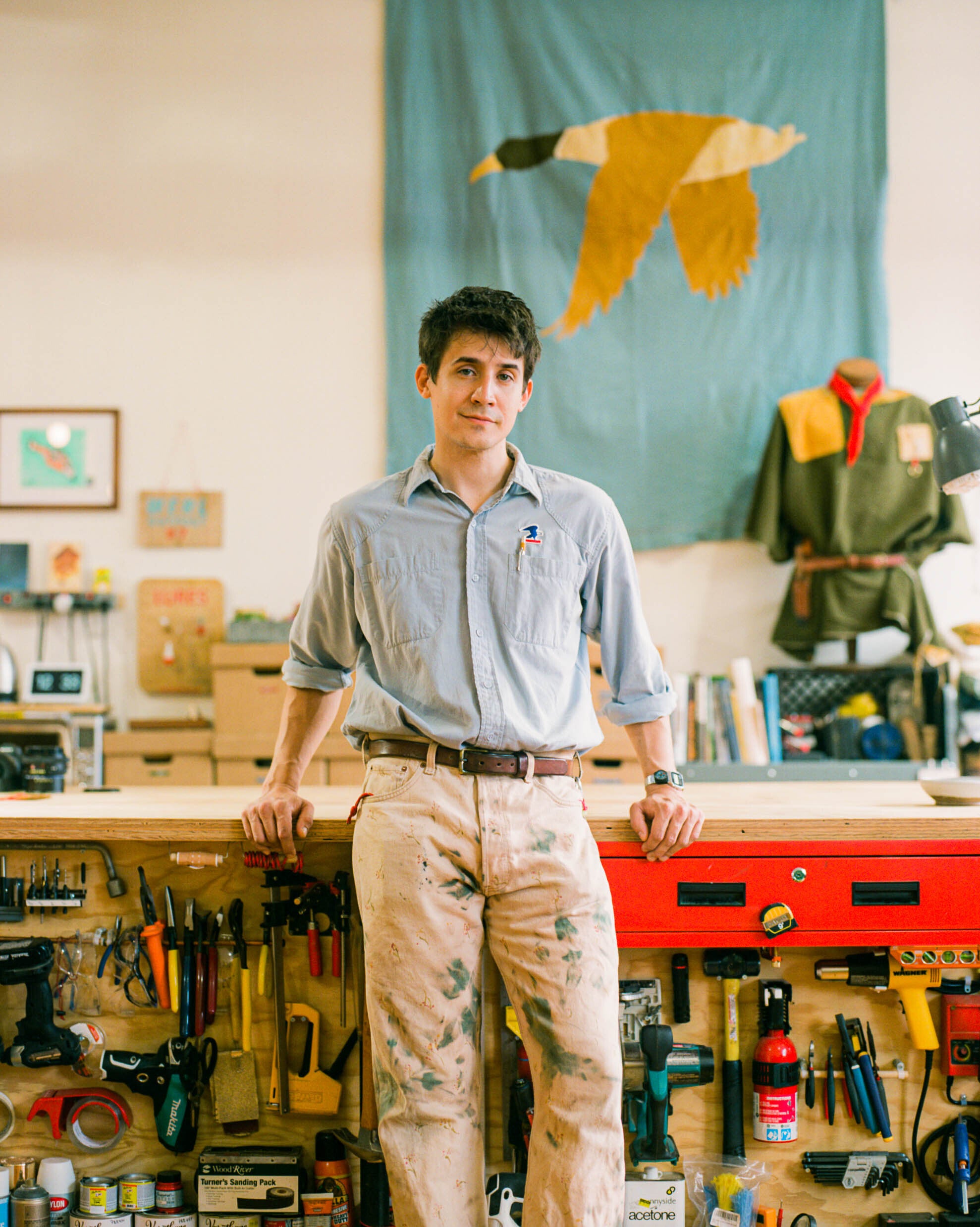
For our first in-store pop-up in two years, we are so excited to welcome William Ellery to Hatchet Supply from October 23rd - November 6th, 2021 with small informal celebrations on the first and last days of the pop-up.
Come by, relax with a drink. William Ellery’s designer, founder, and maker Trevor Davis will be measuring and cutting custom belts to length (available for purchase) and continuing the stories of his garments through alterations, scars, and repairs. RSVP here.
We talked to Trevor about William Ellery and what makes his vision unique.
You say, “William Ellery produces outdoor and workwear apparel from vintage wears, reenvisioning each garment’s unique story.” What is it about vintage garments that draws you to them?
When looking through used clothing, you are bound to come across a camping bag with a girl's name written on it, first and last. Right below it, her older brother's name, victoriously and unceremoniously crossed out from when he used it at camp a few years past. You may find one of the straps reattached with thick nubby stitches, or the drawstring replaced with an old shoelace. Two summers at camp at least, countless miles, and an unknown number of nights in the tent. There is a particular sense of love shown through each one of the alterations, grafitis, and customizations. I am drawn to the rich backstory and deep personal connection we can only conjure through use and abuse of our clothing.
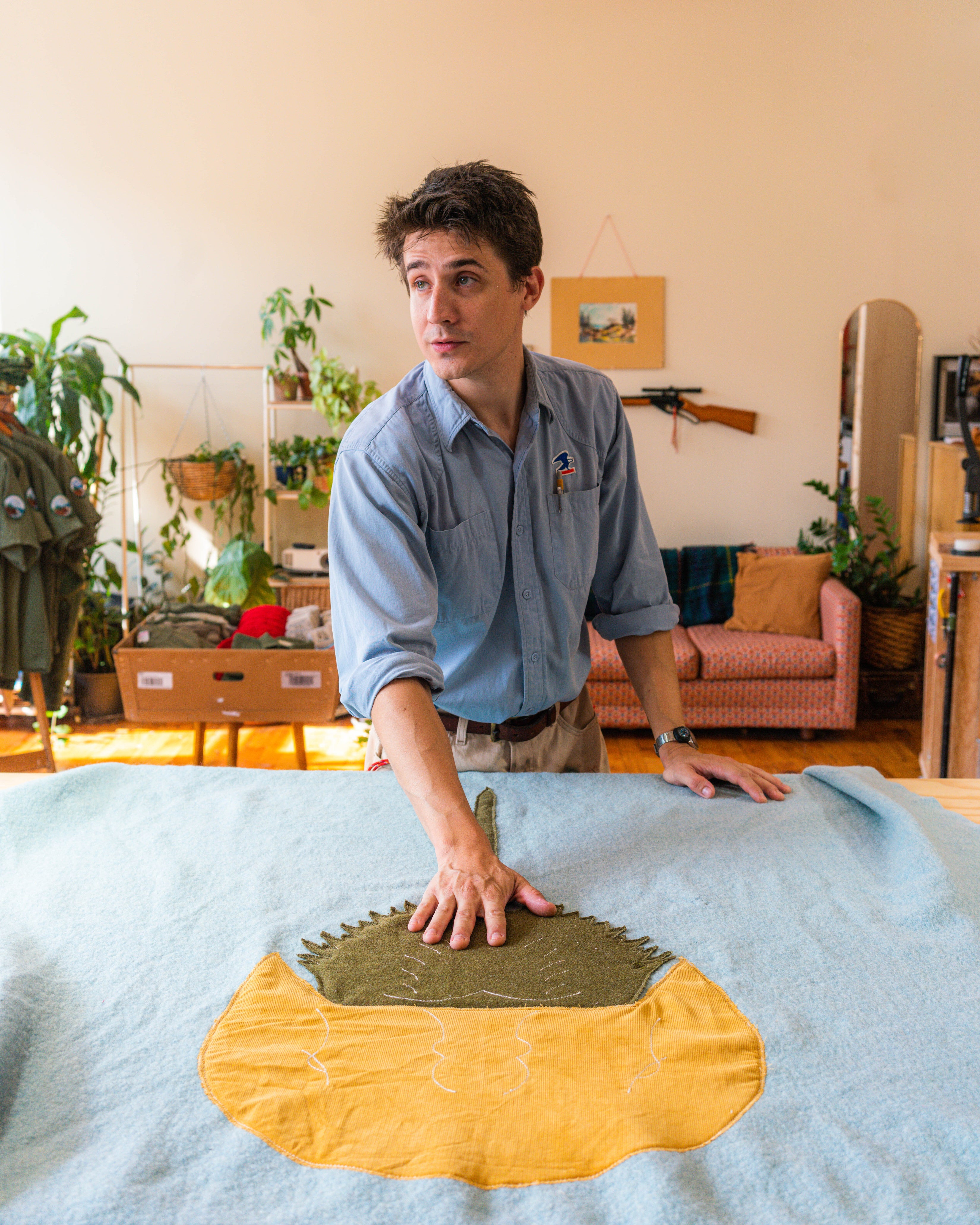
What properties might a vintage piece have that would make you want to continue its story?
Quality. I don’t mean herringbone twill, or cashmere, or french silk. Sure those things are all great, but vintage dealers & vultures will convince you that these are the pearls of used clothing. I think it’s more about the life it has lived, and what life it has left. A 50 year old 50/50 truck driver’s t-shirt will be the softest and most luxurious shirt you will ever own, and it will appear untouched. It has been worn and washed thousands of times in it’s life, but never really used. This is exactly where I want to start writing.
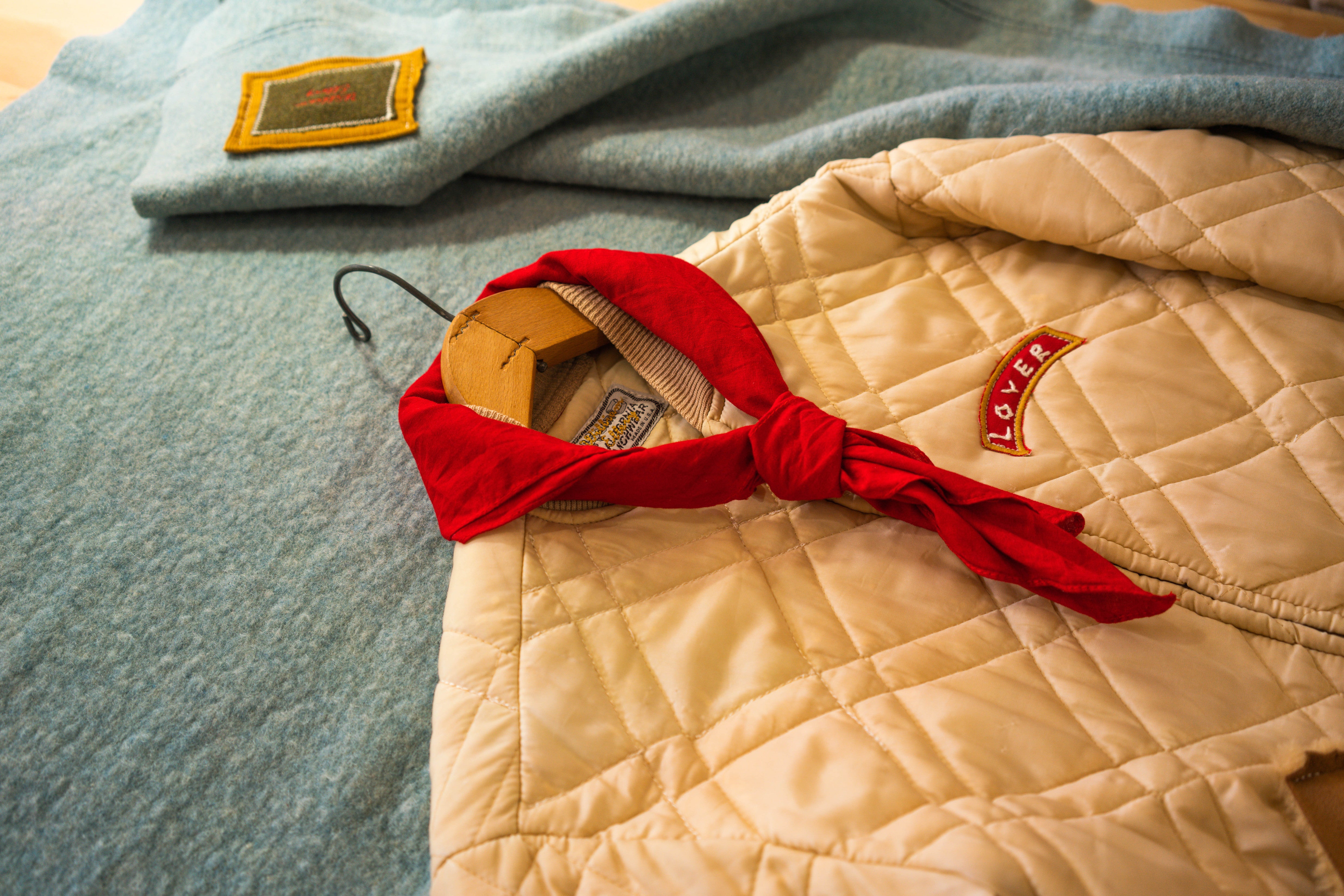
Is there a piece you have made that best typifies the continuation/reenvisioning that William Ellery represents? How so?
It would have to be the William Ellery Vest. I am at the heart a laborer, and that is who I keep in mind when making these. I start with a 1960s-ish hunting vest, and strip out every pocket and stitch. They usually have a waterproof bag on the back for carrying captured birds, and because of this, no-one washes them. Garments live a much longer life without washing. I give them their first gentle wash, being sure to get rid of any bird blood, tobacco, and gunpowder. Then reconstruct them with original and supplementary fabrics in the style of a workers vest. Pockets for pencils, notebooks, and small tools rather than ammo and small arms. My community is not that of fur trappers and bird hunters, but rather furniture makers, wood workers, and makers.
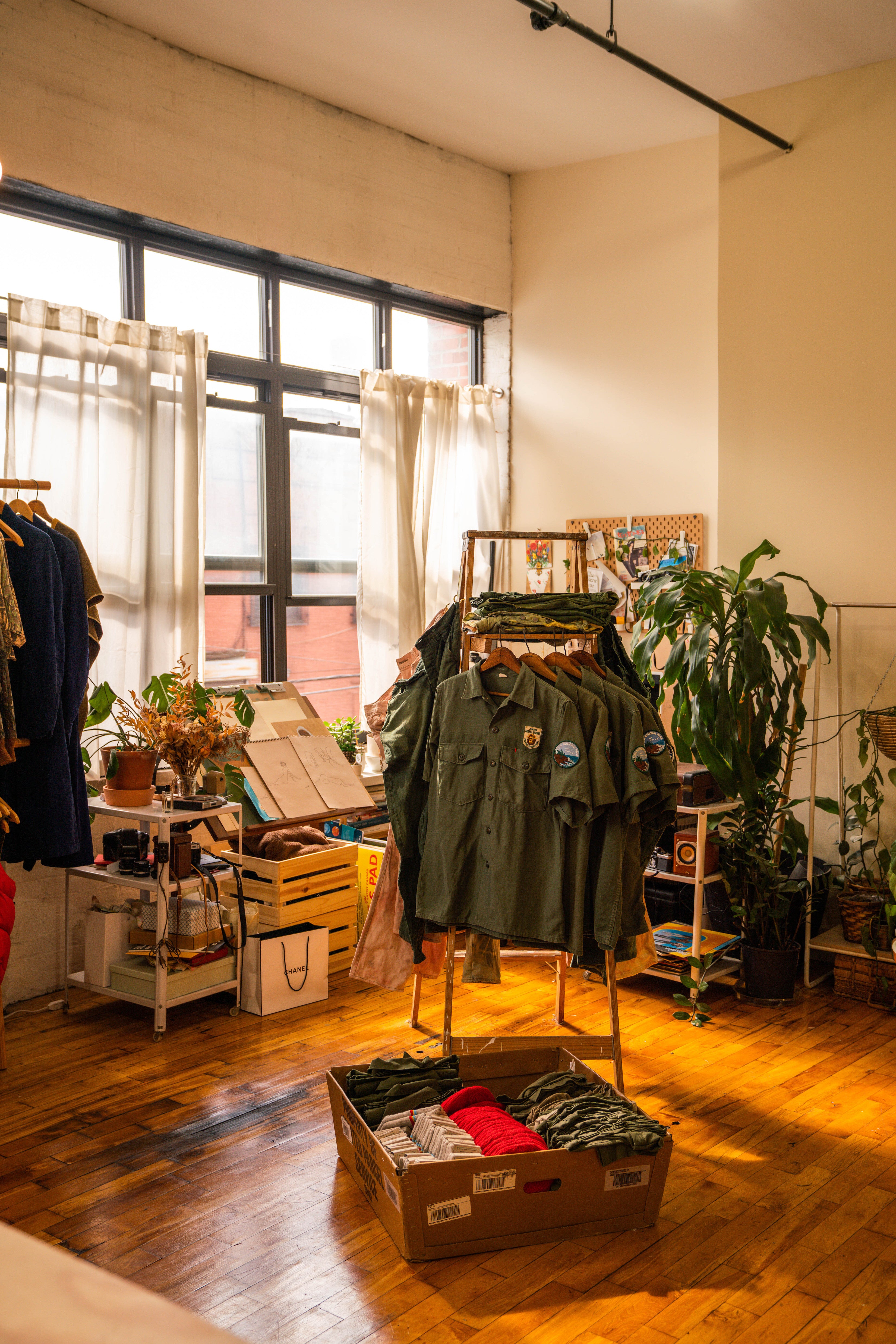
What was your path to founding William Ellery?
I’ve been wearing hand-me-downs since I was born. Used and thrifted clothing since I can remember. I’ve been falling in and out of love with the clothing I have owned all my life. I have lived as a chef, forager, farmer, sculptor, designer, student, and general laborer. These have been the moments that helped expose me to clothing and culture, and sometimes these moments have forced me to abandon almost all my possessions and start over.
When you start over you force yourself to decide what you don't want to be burdened by, and what you find truly important. I decided that I wanted everything I owned to be special, and for that to happen, I had to make it.

Where do you make your apparel?
My studio and International Headquarters is in Brooklyn, NY. While I am fortunate enough to have a community of craftspeople who help supply some of our goods throughout the USA, everything starts and ends in my studio.
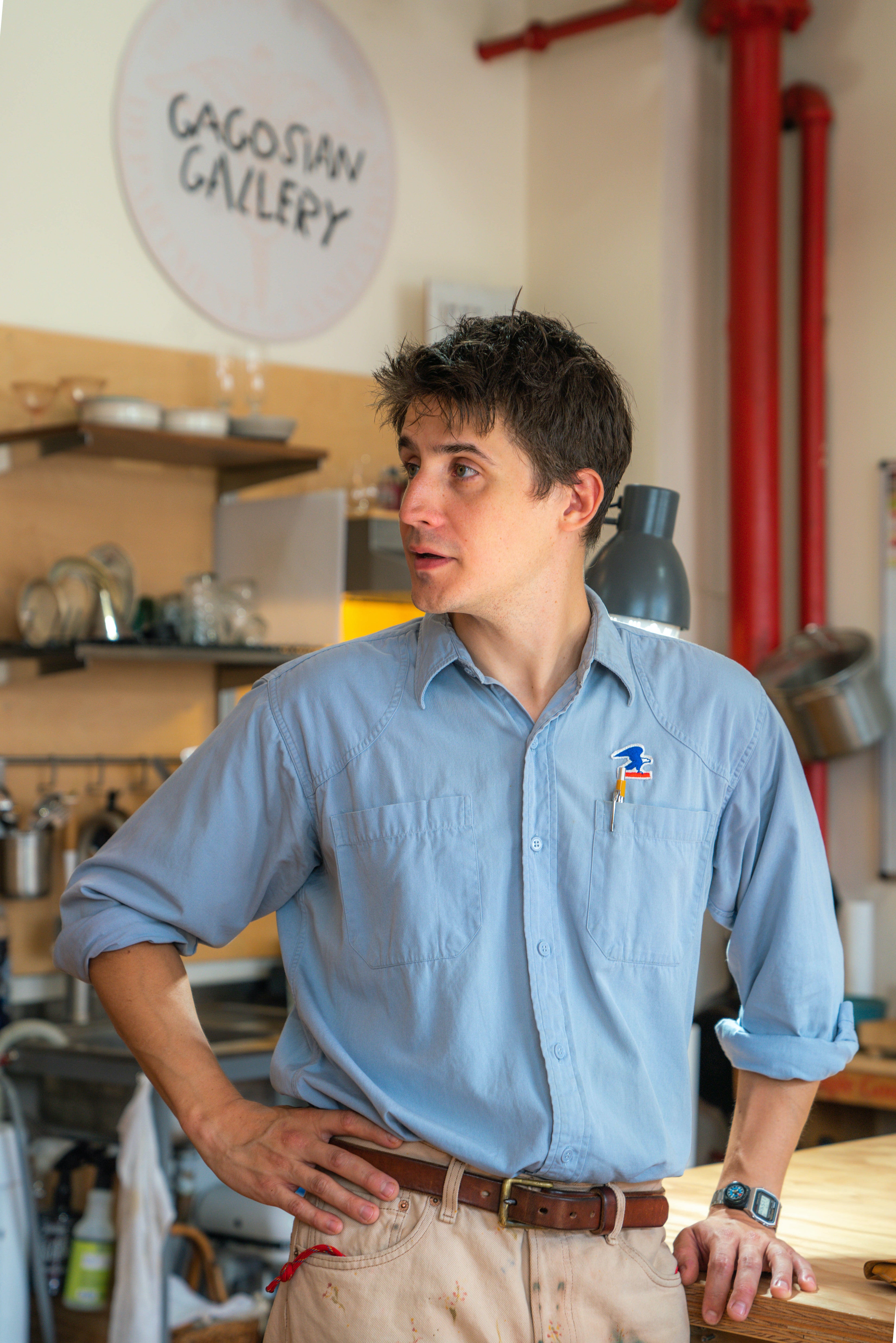
Outdoor and workwear apparel is arguably intrinsically purpose-built. But you also weave this narrative thread through your garments. How do you understand the interplay of function and narrative?
In the 50’s Natick Labs in Massachusetts developed olive drab uniforms for the military. US military uniforms always have to be industrially tough, to a certain level of comfort, and have a level of style engineered into them. This keeps morale up and helps the clothing to last.
I wanted to take this technology and give it to the outdoors people of the National Parks Service, so I made Acadia National Park uniforms with the tested fatigues of the 1950’s.
For William Ellery, the narrative always begins with the function. I may change the storyline, but ultimately I want the garment to be just as comfortable in what it does, as what it used to do.
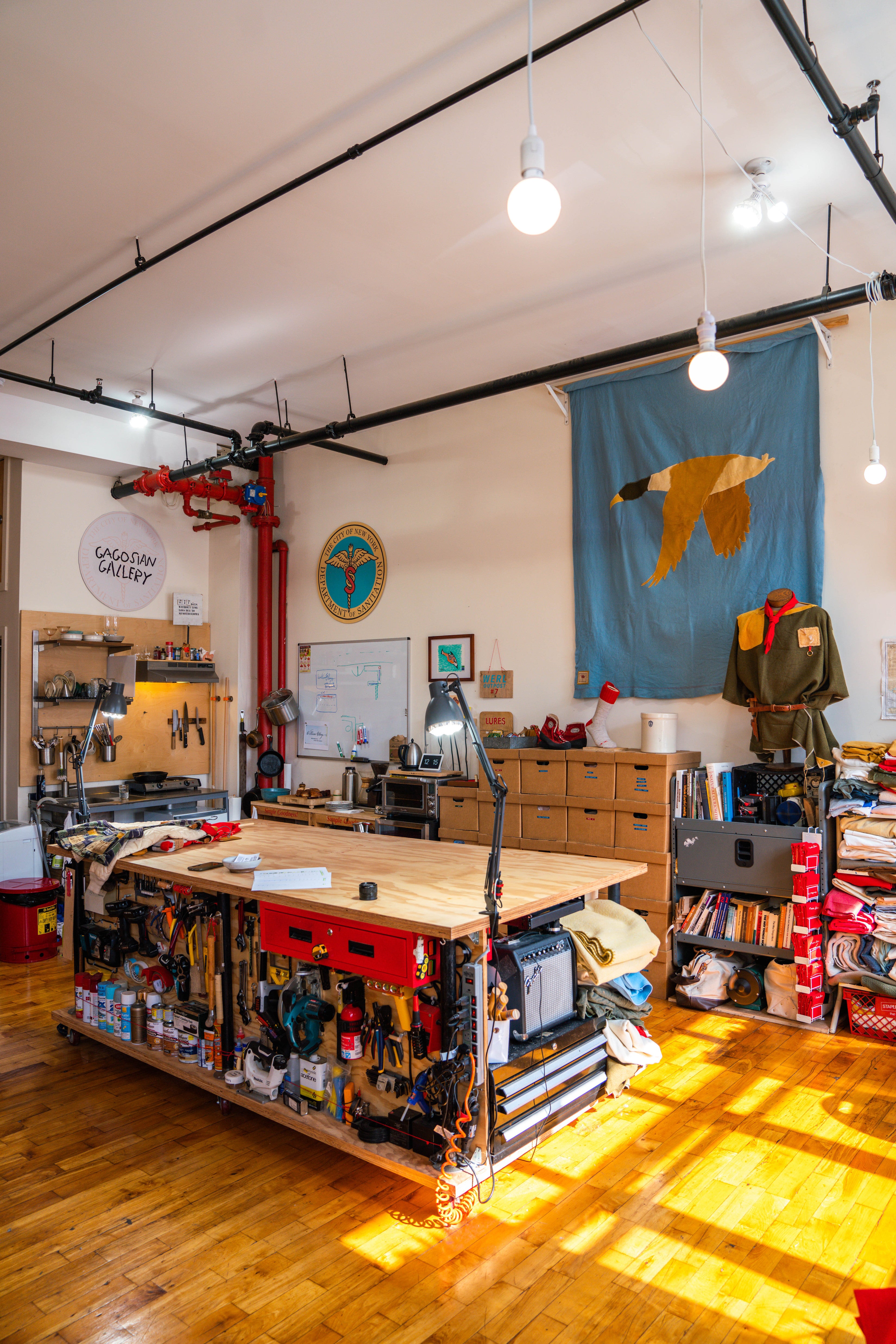
In a way, there’s an extra level of borrowing or continuation just in what you call your company. Why did you choose the name “William Ellery”?
William Ellery is a family name on my Father's side. It's a sweet name, William Ellery. And I make American clothing with a certain sweetness. But if you were to ask me who WIlliam Ellery is, I would say it's you. It's me. It's your boyfriend, your girlfriend, it's who you want to be, or who you want to be with. It's a feeling. Like borrowing your partner's sweater, stomping around in cowboy boots as a child, or wearing your lucky red shirt on a first date. I wanted to give this name to that feeling.

Could you talk about what “ownership” means to you? And do you see it participating with other ideas of ownership?
Purchasing something does not simply grant ownership. When you buy pants from William Ellery I expect you to get them tailored. Actually any pants you buy ever, get them tailored. You have only one life to live in them, and we are far too advanced to conform to the things we own. True ownership starts when we make something uniquely ours, not just put our name on it. Companies, who will outlive us, can put their name on a product, but will never have the pleasure of living and experiencing life with what we make our own.
In my work I use mechanical connections such as stitches, rivets, snaps, grommets and knots. These are all undoable. My garments are meant to be changed, altered, customized, and even destroyed. You may never truly own anything, but you can make it yours while you are here, and leave a story for someone else to pick up.
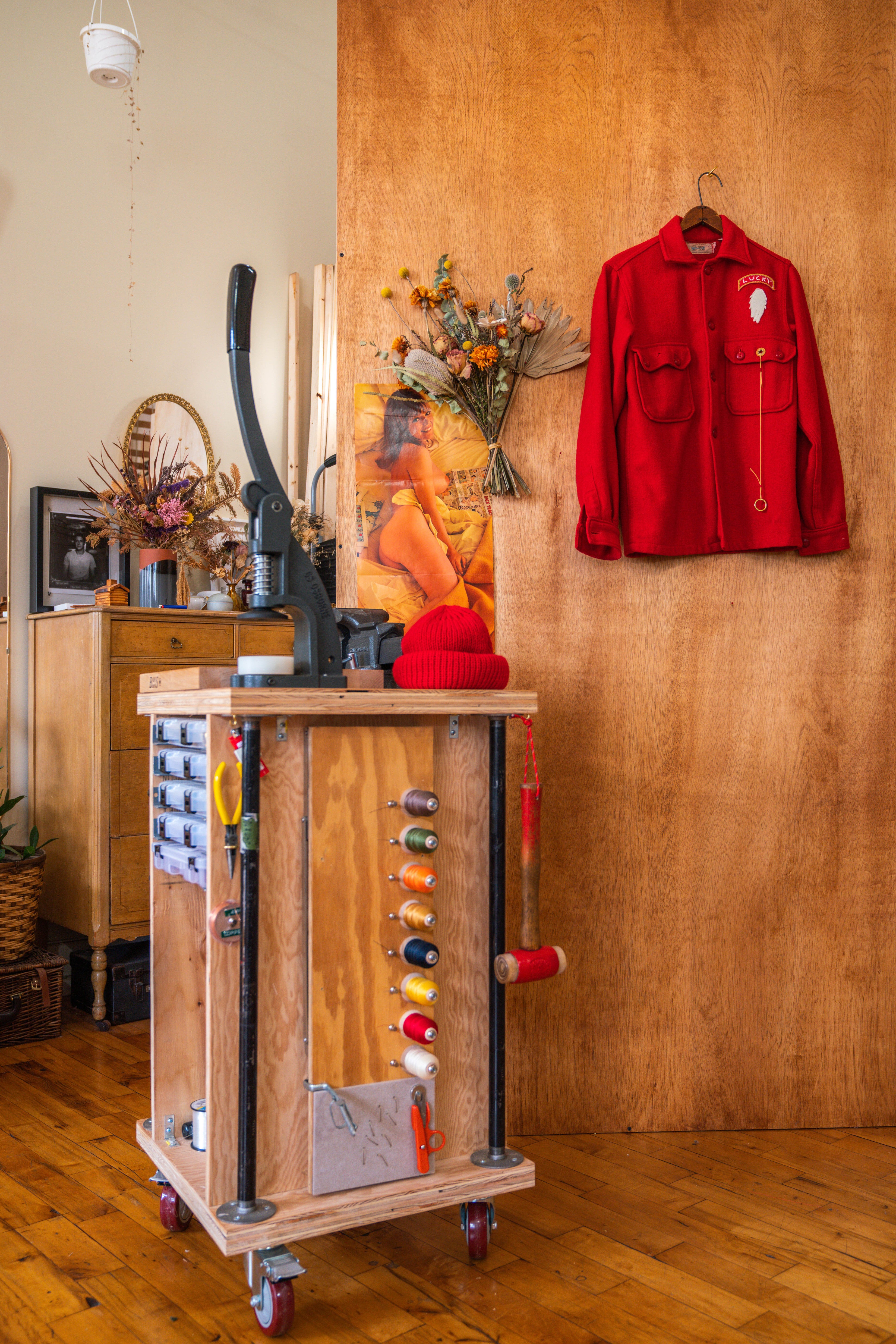
Upcycling and visible mending have been big for a while for many reasons ranging from the intangible to nostalgia to environmentalism. Vintage clothing, of course, is an enormous phenomenon unto itself. How do you understand William Ellery as a part of or apart from these other movements?
I am entirely for the movement of patches and stitches on clothing as a means to repair and lengthen the life of garments. I think making garments from discarded fabric and clothes is a dutiful move towards the future. I believe visible mending is a badge of honor.
But for William Ellery, these things are a given. I don’t want to convince anyone that they need a piece of clothing because it's sustainable, or upcycled. If I’m doing my job right, that should all just fade away into the background, and you should be in love with something that is entirely new. I make clothing, not from new fabrics, but from old clothes. I want to accept the rest as normal, move past it, and get to work.

What are three books, artists/works of art, podcasts, articles, etc. that have shaped you?
Jacques Cousteau and his series The Undersea World of Jacques Cousteau from the late 60’s & early 70’s is a constant source of inspiration. It is a reminder that exploration can be not only for scientific progression, but for the sake of catching a glimpse of something beautiful, mystical, and other worldly.
Walt Disney, the man, was constantly thinking about the way the world should be and not the way it was. His gumption and determination reminds me that we need to shape our world to what we want it to be, and to be swift in what we can do before we die and a corporation takes over.
The American Artist Tom Sachs, who reinforces the idea, by any means necessary. It is easy to believe there is a certain way of doing something, and to be trapped in that idea. Tom showed me that we can build anything at all with what we have available already, as long as we can separate ourselves from our predetermined idea of what things are expected to be.
Interview by Storr Erickson
Photos by Stephen Han
Production by Michael Stewart




